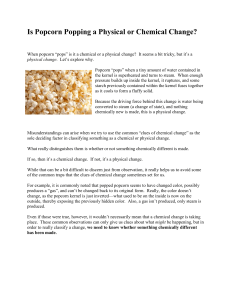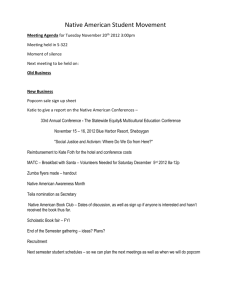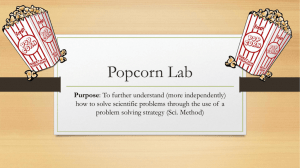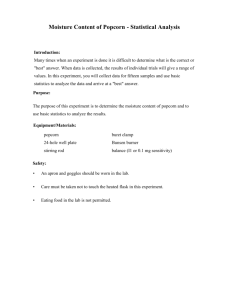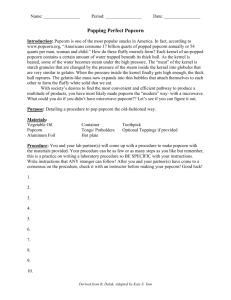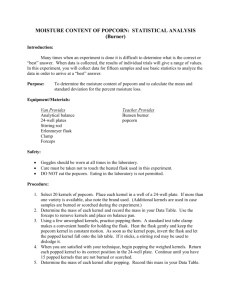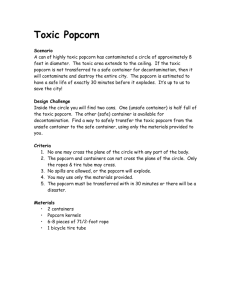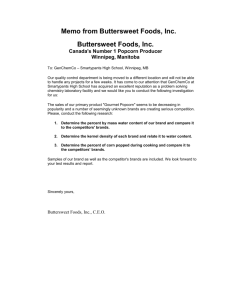Popcorn: Physical vs. Chemical Change Explained
advertisement
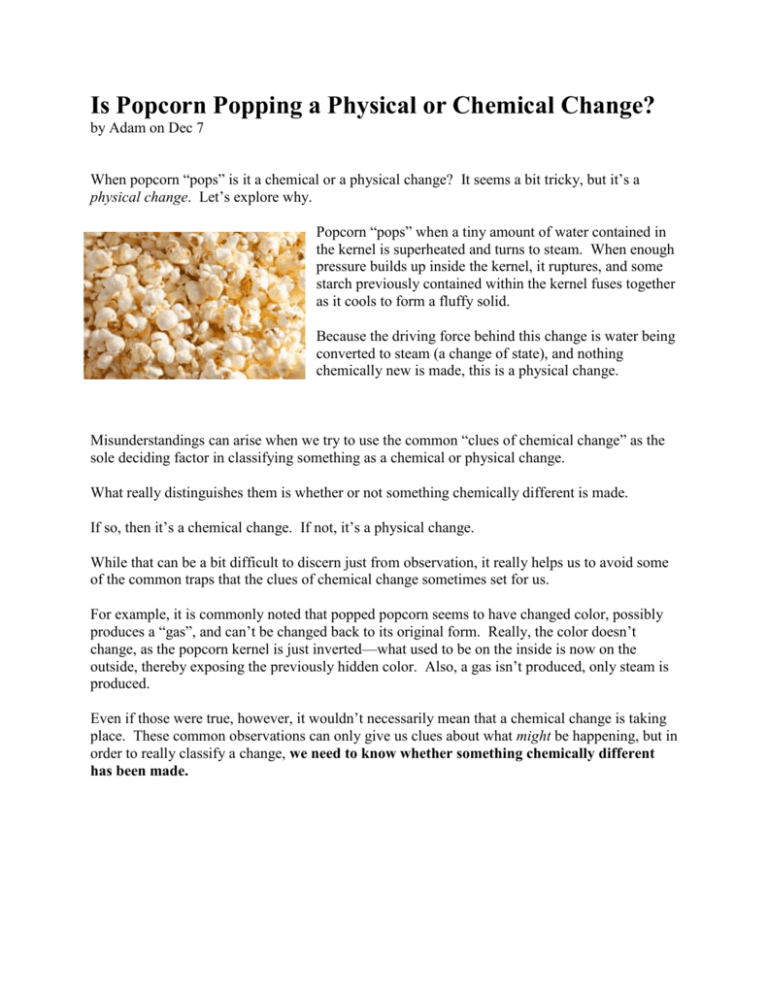
Is Popcorn Popping a Physical or Chemical Change? by Adam on Dec 7 When popcorn “pops” is it a chemical or a physical change? It seems a bit tricky, but it’s a physical change. Let’s explore why. Popcorn “pops” when a tiny amount of water contained in the kernel is superheated and turns to steam. When enough pressure builds up inside the kernel, it ruptures, and some starch previously contained within the kernel fuses together as it cools to form a fluffy solid. Because the driving force behind this change is water being converted to steam (a change of state), and nothing chemically new is made, this is a physical change. Misunderstandings can arise when we try to use the common “clues of chemical change” as the sole deciding factor in classifying something as a chemical or physical change. What really distinguishes them is whether or not something chemically different is made. If so, then it’s a chemical change. If not, it’s a physical change. While that can be a bit difficult to discern just from observation, it really helps us to avoid some of the common traps that the clues of chemical change sometimes set for us. For example, it is commonly noted that popped popcorn seems to have changed color, possibly produces a “gas”, and can’t be changed back to its original form. Really, the color doesn’t change, as the popcorn kernel is just inverted—what used to be on the inside is now on the outside, thereby exposing the previously hidden color. Also, a gas isn’t produced, only steam is produced. Even if those were true, however, it wouldn’t necessarily mean that a chemical change is taking place. These common observations can only give us clues about what might be happening, but in order to really classify a change, we need to know whether something chemically different has been made. Consider, for example, adding Kool-Aid mix to water. The color of the water changes, but it’s a physical change. Or think about a block of dry ice exposed to open air. A gas is produced, but again, it’s a physical change. The carbon dioxide just sublimes (changes to a gas from a solid without passing through the liquid phase) to form the mist or “smoke” that we observe. Sometimes, the clues of chemical change are really handy, and they can help us to venture good guesses about whether something is a chemical or physical change, but in the end we always have to ask ourselves the question: was something chemically new made? If the answer is no, then it’s a physical change. http://www.middleschoolchemistry.com/atomsworld/2011/12/is-popcorn-popping-a-chemicalor-physical-change/ 1. After reading this article, what did you learn about physical and chemical changes? _____________________________________________________________________________________ _____________________________________________________________________________________ _____________________________________________________________________________________ 2. After reading this article, did you change your position about the popcorn station from the other day? Explain why or why not. _____________________________________________________________________________________ _____________________________________________________________________________________ _____________________________________________________________________________________ _____________________________________________________________________________________ _____________________________________________________________________________________ _____________________________________________________________________________________
